Whether you’re taking pictures of your kids or doing children’s photography for a living, learn how to capture beautiful photos of kids.
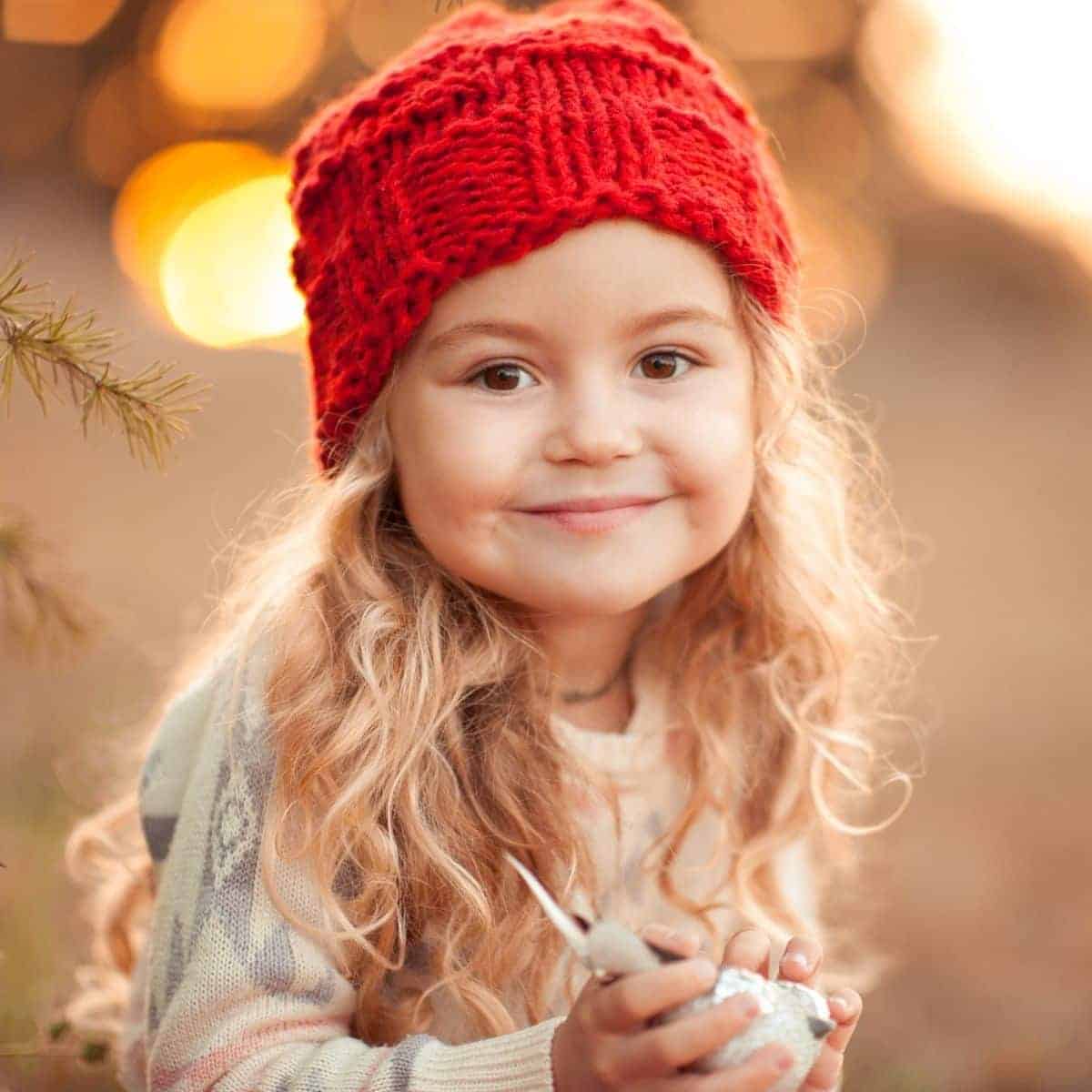
Kids are precious and adorable. As a photographer, parents rely on you to capture beautiful images of their kids.
If they’re your kids, you want to photograph them for memories of these sweet, but passing moments.
Related article: How to photograph professional headshots
While children’s photography produces some of the cutest images, it’s not easy. Sometimes, kids aren’t cooperative or aren’t feeling well.
By knowing what to do in different situations, you’ll be able to capture wonderful images of children anytime.
Related article: How to use butterfly lighting for amazing portraits
The following is your complete guide to children’s photography.
You’ll learn about the best camera settings, gear, tips, and advice to photograph captivating pictures of kids.
Best camera settings to photograph children
The camera settings you choose determine the outcome when photographing kids.
Your settings depend on the location, lighting, and creative goals of the session. However, the following settings are an excellent place to start:
- Aperture. Start with an aperture of f/4. Open it wider for a shallow depth of field or narrower for a deeper depth of field.
- Shutter speed. Children aren’t always perfectly still, so start with a shutter speed of 1/200. Go slower to blur motion and faster if needed.
- ISO. Begin with the base ISO, which is often 100. If the image is underexposed, slowly increase the ISO, but keep it under ISO 800 to avoid excessive digital noise.
- Drive mode. Set the camera to continuous shooting because the perfect moment may happen after the first press of the shutter.
- Focus mode. Autofocus is easier, faster, and more accurate than manually focusing. Use AF-S or single-point autofocus because it gives you pinpoint accuracy.
- Focus area. Spot focusing gives you the best results because you can point the focus spot at the kid’s eyes and capture a beautiful image.
- White balance. AWB is ideal for changing situations. Select a white balance preset if you’re only shooting in one location.
- File format. Shoot in RAW to retain all of the details in the image. You can edit the photo to your liking in post-processing.
Again, the settings are a starting point. Make adjustments as needed.
Aside from the settings, your photography equipment also plays a role. Ideally, use a high-resolution DSLR, mirrorless, or Micro Four-Thirds camera.
A high-resolution camera ensures you capture quality and detailed images.
With the camera, you’ll need one or more lenses.
For prime lenses, 35mm, 85mm, and 135mm are the best focal lengths for child photography. If you prefer a zoom lens, the 24-70mm and 70-200mm lenses are the two best choices.
Regardless of the lens you choose, get one with a wide maximum aperture because it’ll allow you to capture a beautiful and blurry background with bokeh.
Children’s photography tips
Children grow up quickly. They go from newborns to toddlers to teens.
Related article: 12 best newborn photography tips
Whether it’s yours or a client’s kid, photos freeze their precious moments. The images are excellent for home decor, memories, announcements, and invitations.
A child photography session is fun, adorable, and rewarding. However, it has its challenges.
Use the following tips to take wonderful portraits of kids and capture their essence and personality.
Kids need to feel comfortable
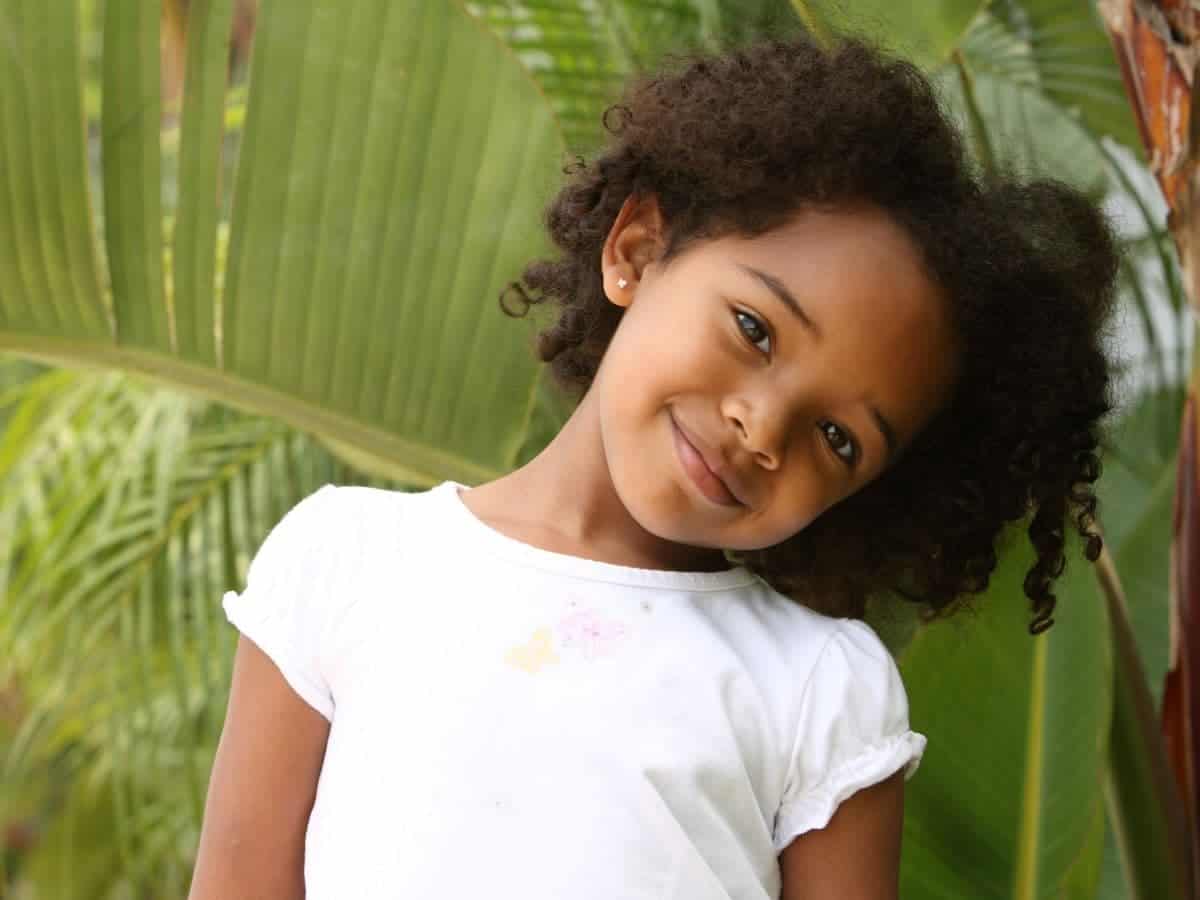
To capture the best portraits of kids, they need to feel comfortable.
Before you tell them to pose and start snapping away, focus on building trust. Otherwise, the kid will look unnatural, awkward, and uncomfortable in the photos.
Many adults aren’t even comfortable with a camera pointing at them. So, don’t expect kids to immediately be ready for a photoshoot.
Start the session by having a conversation. Get to know the kid and share things about yourself.
After they get comfortable with you, they need to get comfortable with the camera.
Start taking a few photos here and there to warm the kid up to the camera. You may also capture some of the best images during the warm-up period.
When you take portraits of kids, you need to have patience and lead them, but go at their pace.
Be positive and reassuring
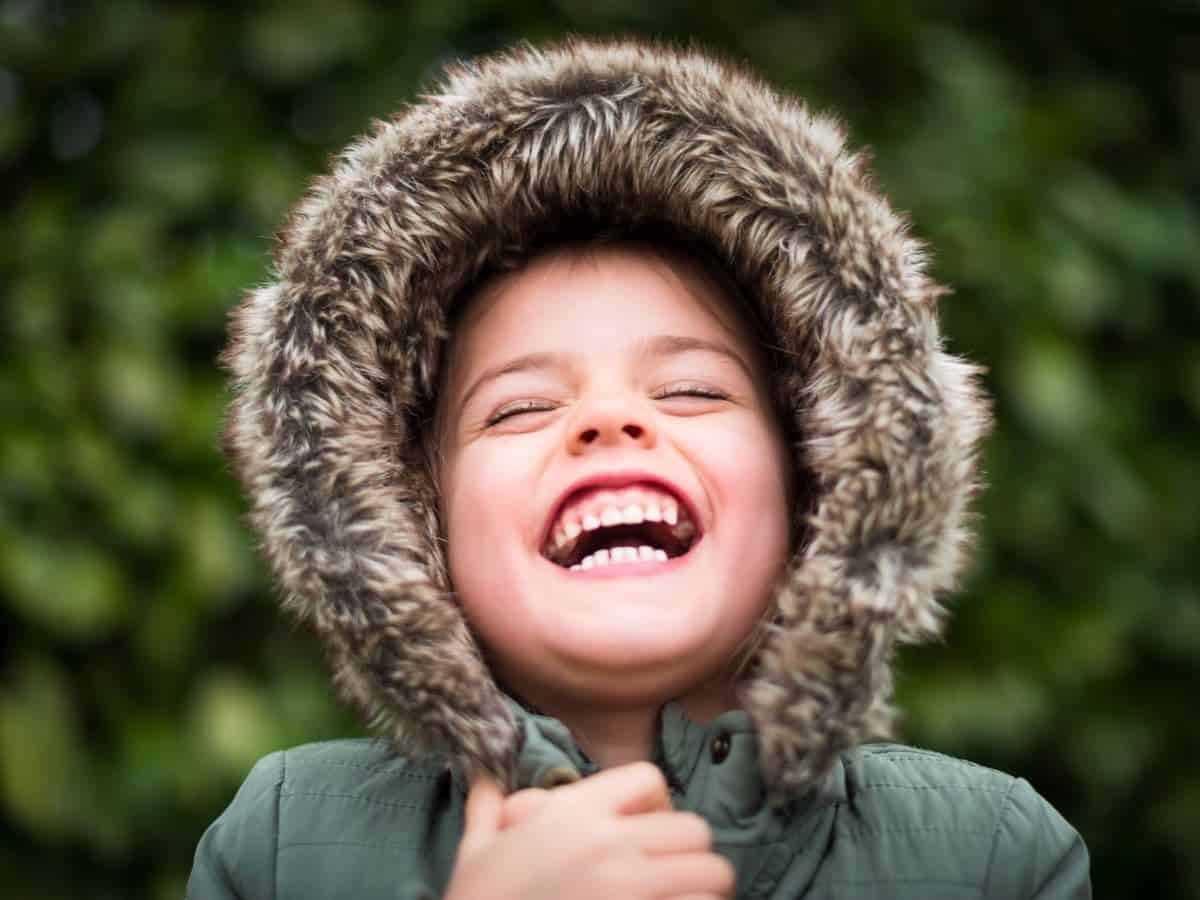
Throughout the session, be positive and reassuring. Make sure the kid knows they’re doing a good job.
It’ll boost their confidence, and they’ll feel more relaxed. The kid will also enjoy the session more and be comfortable with the camera.
As a result, you’ll take beautiful and natural photos with genuine expressions and emotions.
If a pose or location isn’t working as you thought, move on. Chances are, the session won’t go perfectly.
So, forget about perfectionism and focus on going with the flow and positivity.
The eyes are everything
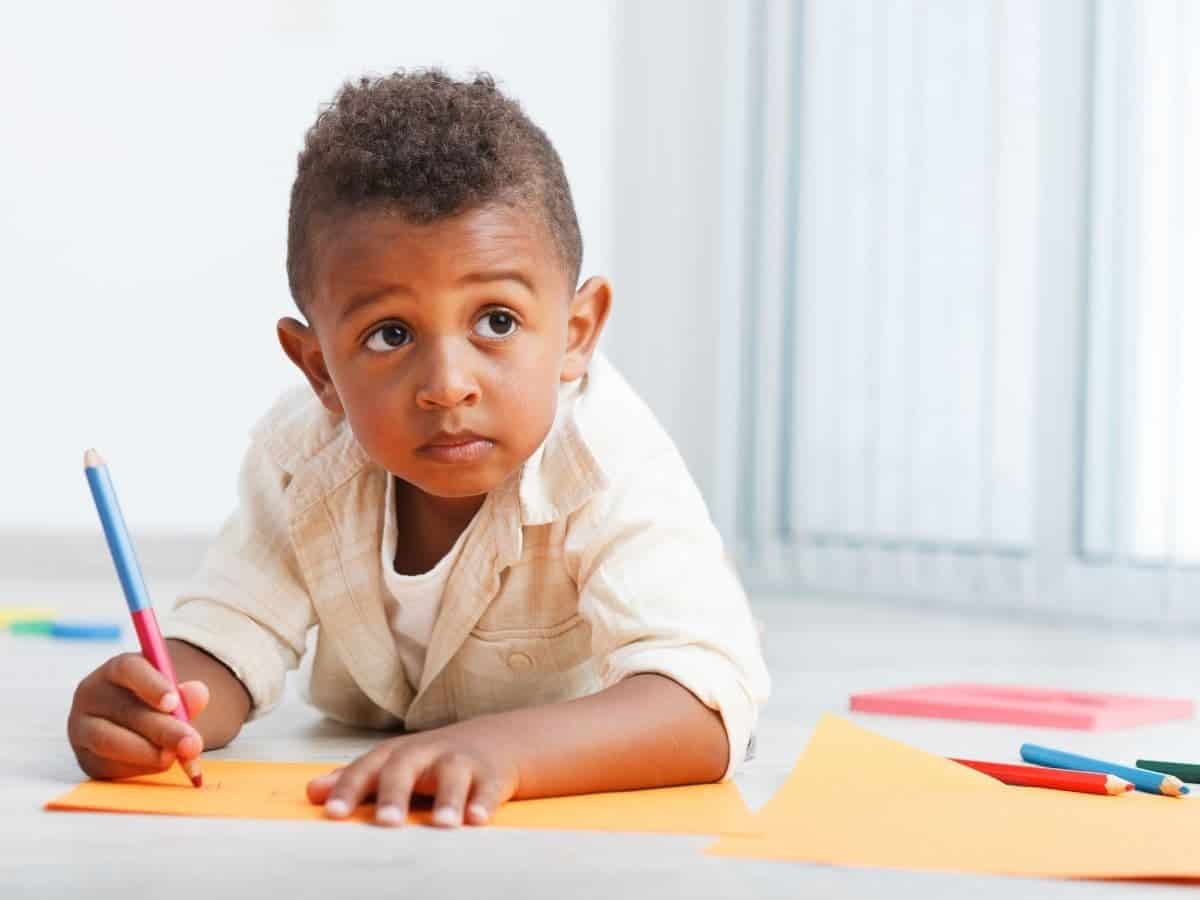
In children’s photography and all types of portraiture, the eyes are significant because they’re beautiful and convey emotions.
When taking photos of kids, the focus point is in their eyes. Ensure they’re in sharp focus and have an abundance of light.
Well-lit eyes are appealing, and they’ll stand out due to catchlights.
Be on the same level
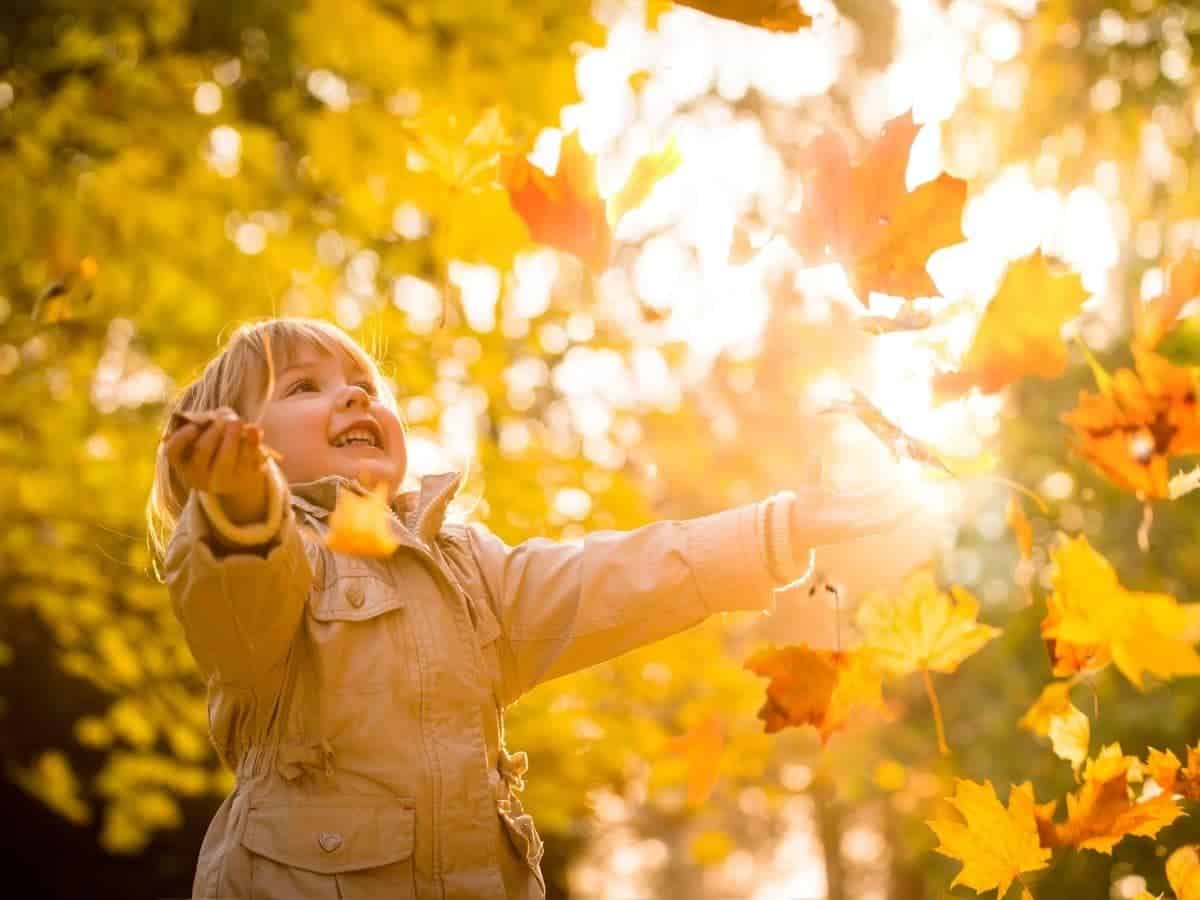
Instead of pointing the camera down towards a kid, get down to their level.
Not only will the kid feel more comfortable because you’re not looking down towards them, but it’ll also produce better images.
As a photographer, you’ll need to bend or crouch down and sometimes even lay down on the ground.
The ideal position is for the camera to align with the kid’s eyes. The photos you take of children at eye level will instantly look better.
Of course, you can alter the angle based on the type of photo or compositional tool you’re using.
Composition is key
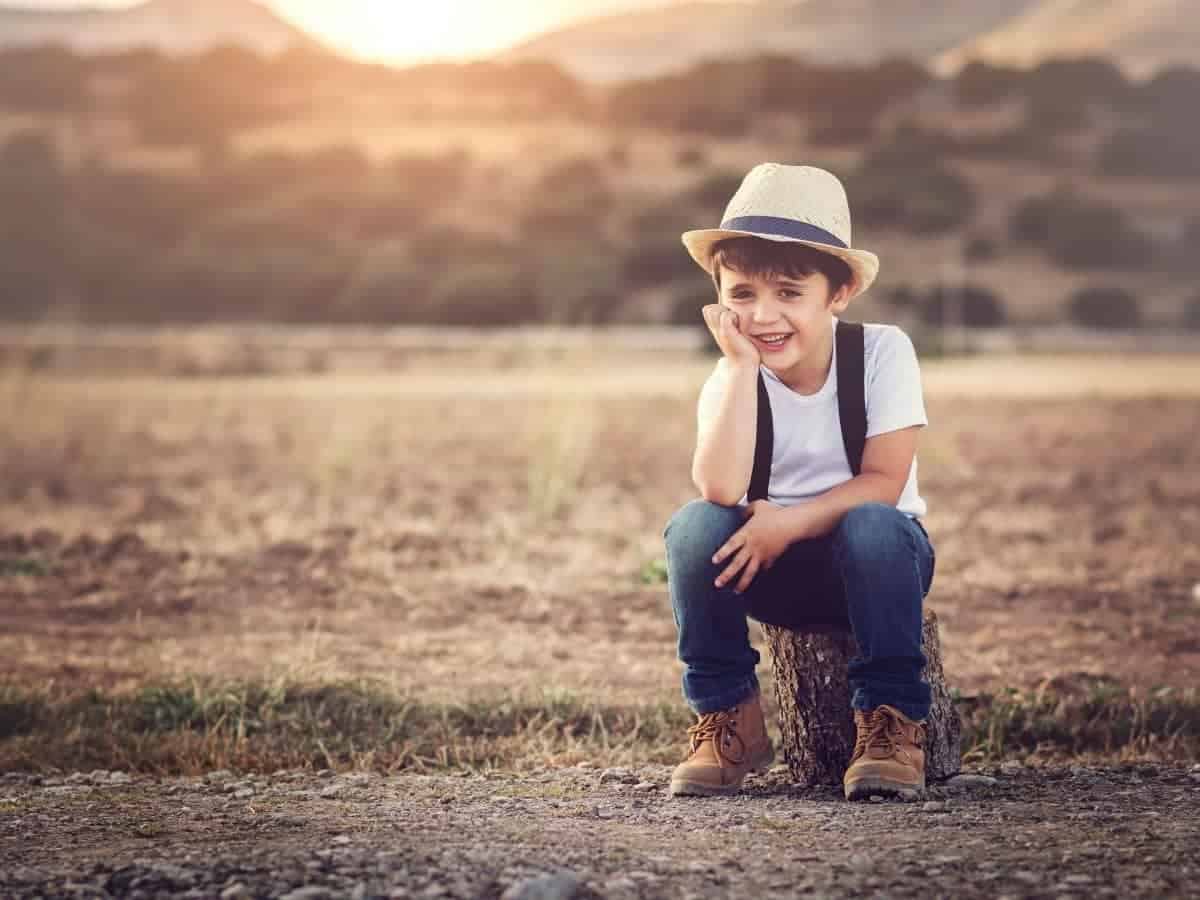
If you’re looking for a secret, good composition is it.
When you’re framing the shot, remember to use compositional tools, such as the rule of thirds, leading lines, framing, symmetry, balance, and filling the frame.
With excellent composition, your photos will have a stronger and more visually-interesting effect. It’s the key to capturing stunning photos of kids.
Capture their personality
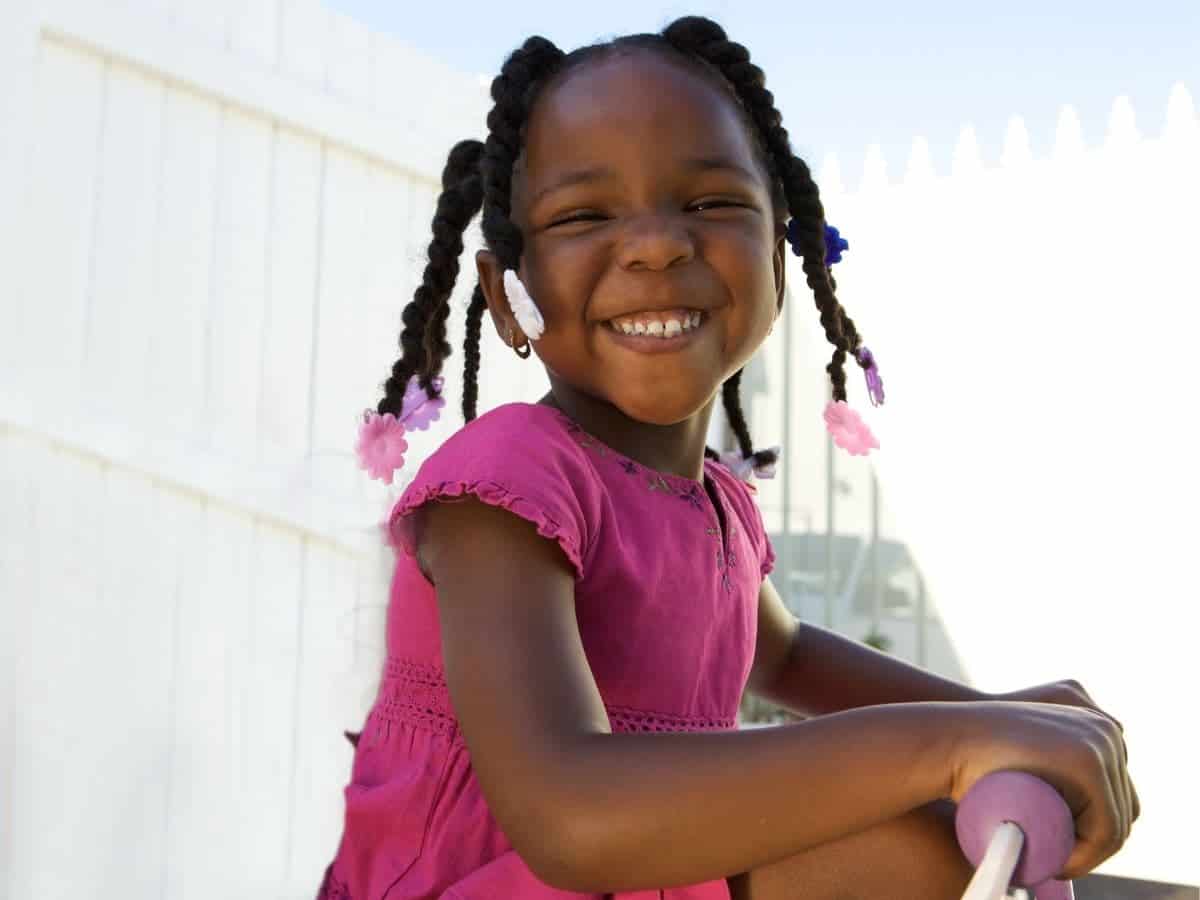
Each kid is unique. They have characteristics and personalities that stand out.
As a photographer, your job is to capture the essence and personality of the child.
By getting to know them, you’ll do a better job at conveying who they are.
It’s more important than the perfect composition, settings, or light.
When a friend or family member looks at the photo, they should say that it’s natural and portrays who the kid is.
Additionally, let them be themselves. Don’t conform them to who you want them to be for the photo.
Look for candid moments
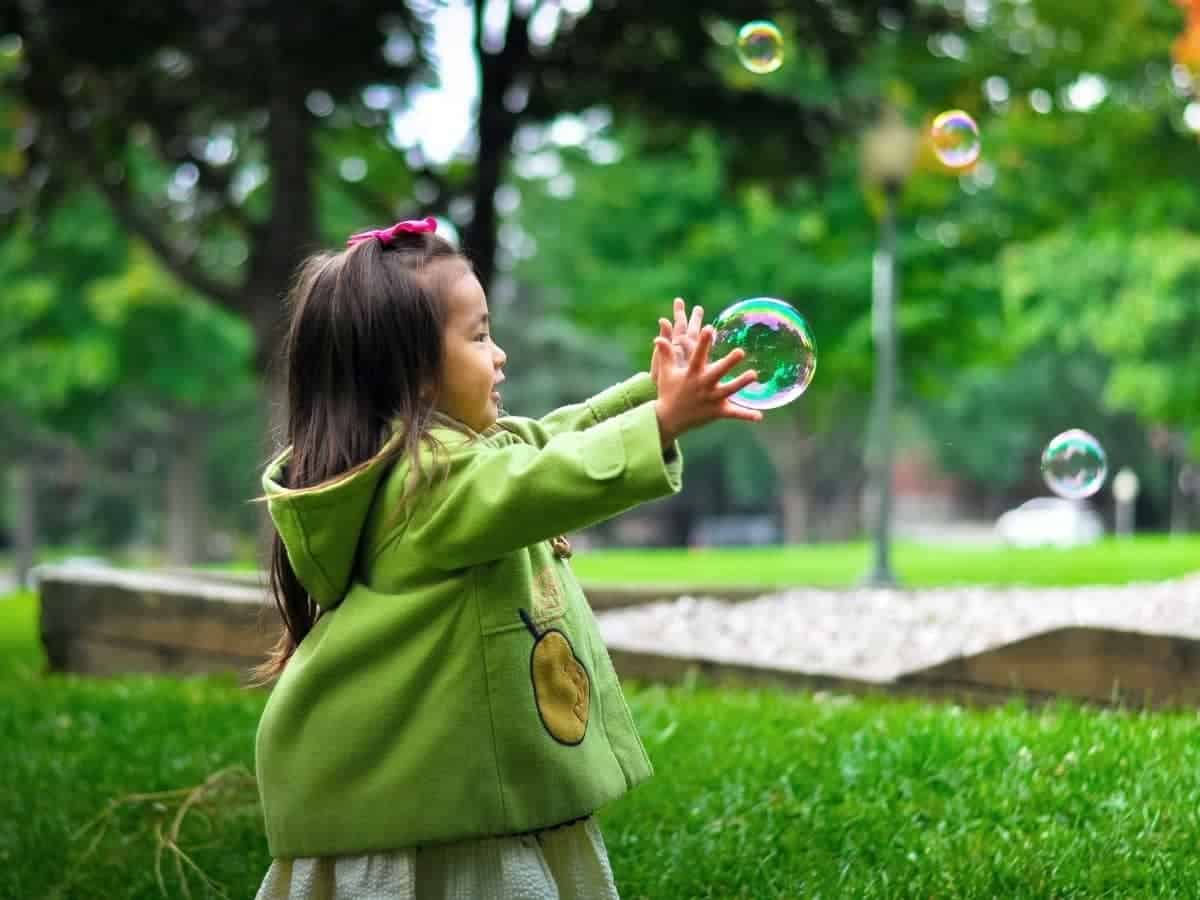
Candid moments create the absolute best images. It captures a child’s natural movements, expressions, and way of being.
To photograph candids, you must have your camera ready at all times because the in-between moments occur and pass quickly.
Look for candid moments when the kid is interacting with their family, themselves, objects, or as they’re walking.
Since children are full of surprises and expressions, let them have fun and go with the flow.
It also helps to plan activities or games. As a result, you’ll photograph powerful candids.
Show the pose
While most of your photographs may be candids, capture a few posed images.
Posing kids has its challenges, so don’t plan too many poses. Instead, select a few that would work well with the child.
Also, hold off on posed photos until they’re comfortable with you and the camera. Once they are, you can introduce a few poses.
While you may be clear with your verbal directions, it’s important to show the pose, too.
Not only will it be easier for the kid to do, but it can also spark laughter.
Related article: Creative maternity photoshoot ideas and tips
Good lighting is a must
Whether you’re shooting in a studio, home, or outdoors, good lighting is essential.
Soft natural light is ideal because it creates a beautiful effect. If you’re using artificial light, mimic natural light with a softbox.
Aside from the type of light, experiment with front, side, and backlighting. Also, implement different lighting patterns, such as loop lighting.
By using different lighting types and techniques, you’ll capture a variety of images and find what looks the best with the kid.
Remember, the goal is to capture magical and stunning portraits. Lighting will be the difference between a decent and incredible image.
Props and accessories are essential
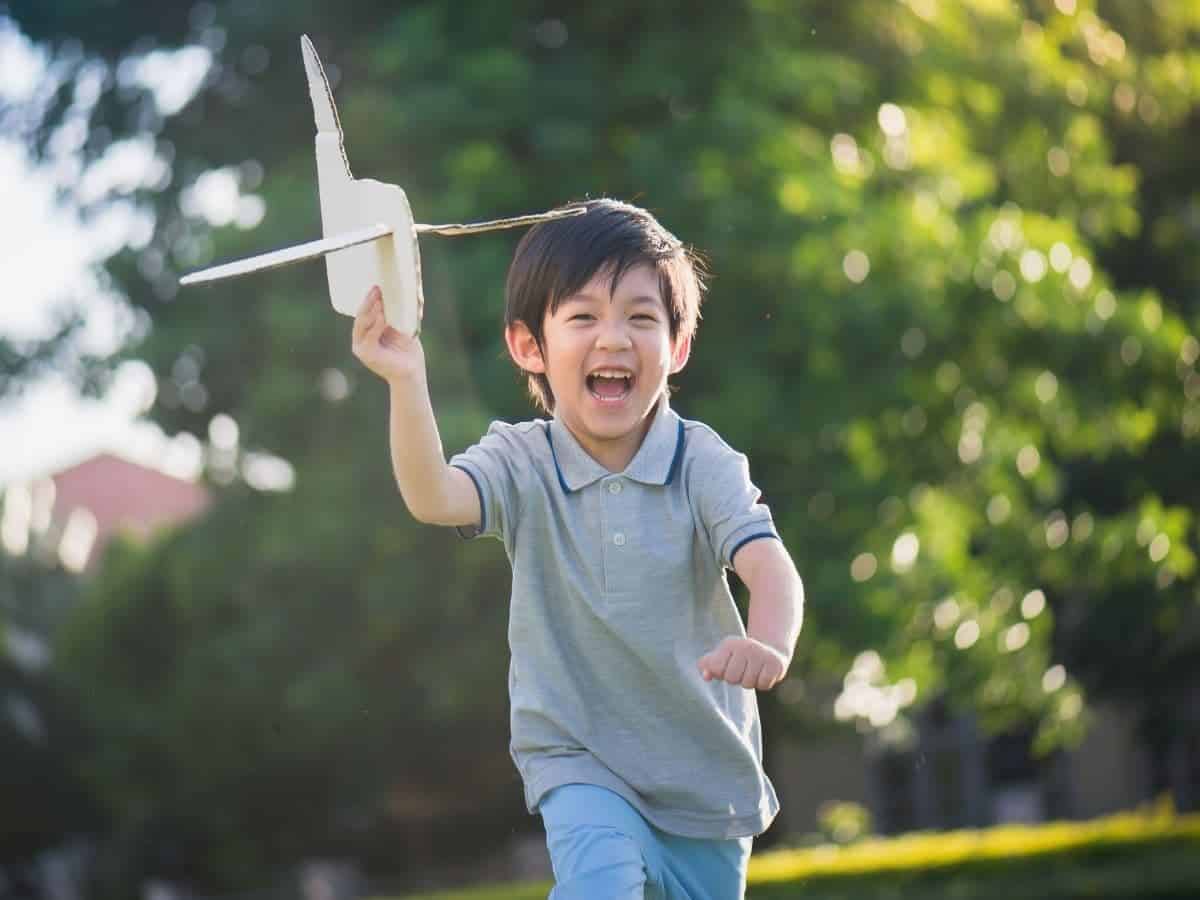
Props and accessories are excellent for making your kid’s photos more interesting and fun.
Several great examples of props are toys, sports equipment, flowers, lights, and meaningful items. For accessories, hats, sunglasses, and bows are perfect.
While you can bring props, the kid should bring them because they’ll have items with meaning.
When choosing props to use for the session, consider the context.
For example, use a beach ball as a prop for photoshoots on the beach. Also, use sunglasses when it’s sunny and not raining.
Props and accessories give the kid something to do or wear, which leads to natural-looking photos.
They help you tell a story through the image and make it visually interesting.
Try different perspectives
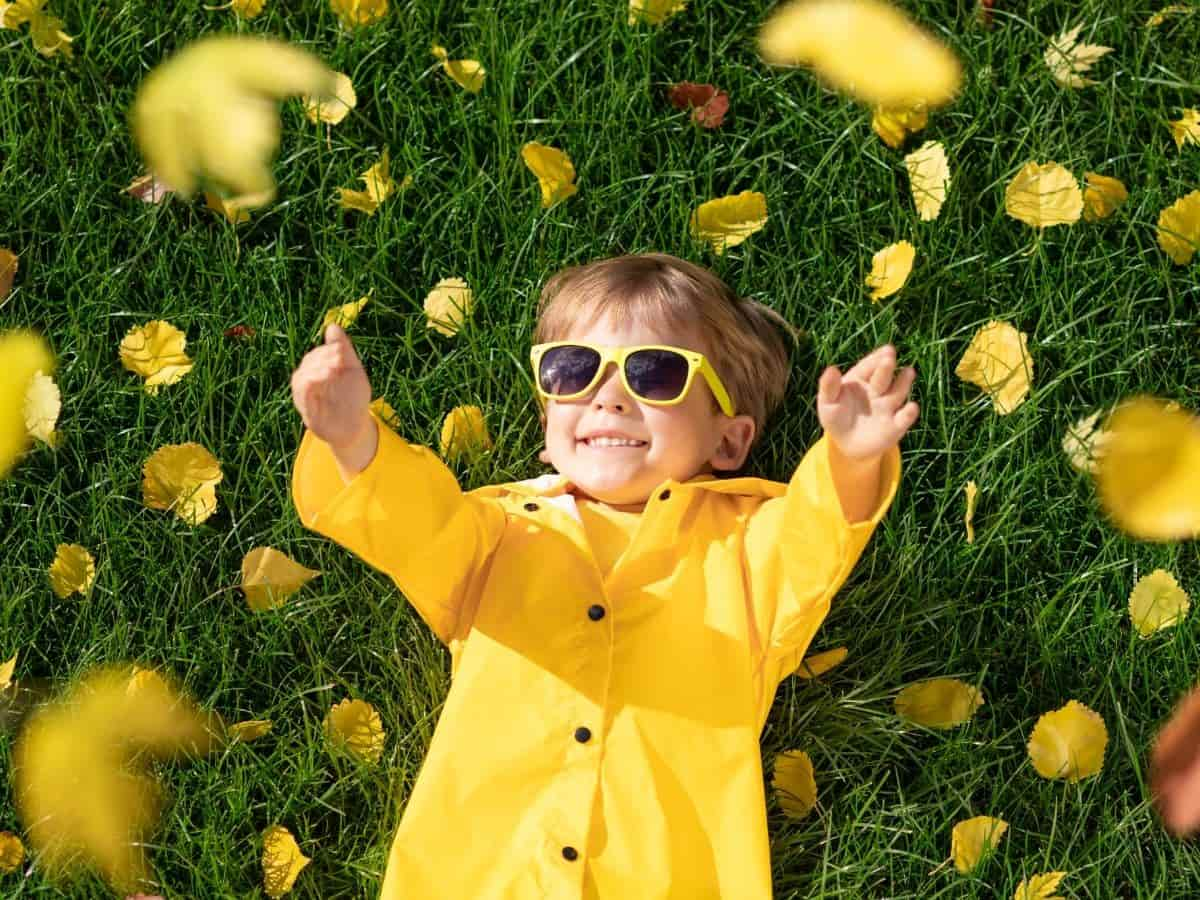
At eye level, you’re shooting with a straight-on angle. While it’ll produce flattering photos of kids, try different angles.
Adjust the angle to tell a story and improve the composition.
Keep in mind that different angles have various meanings.
For example, a low-angle shot makes the kid look taller, bigger, confident, and more powerful.
A high-angle shot can make the kid appear small and vulnerable.
Consider how the kid looks from different angles to find the best ones. It’ll create variety within your photos and offer different perspectives.
Capture all emotions and expressions
Genuine emotions and facial expressions contribute to top-notch photos.
When a child feels at ease, they’re more likely to look and act natural.
Focus on having fun and a good conversation because you’ll have opportunities to capture real emotions and smiles.
Additionally, the child doesn’t need to be smiling all the time. Take photos of all emotions and expressions, including grins, frowns, smirks, and funny faces.
Avoid distracting backgrounds
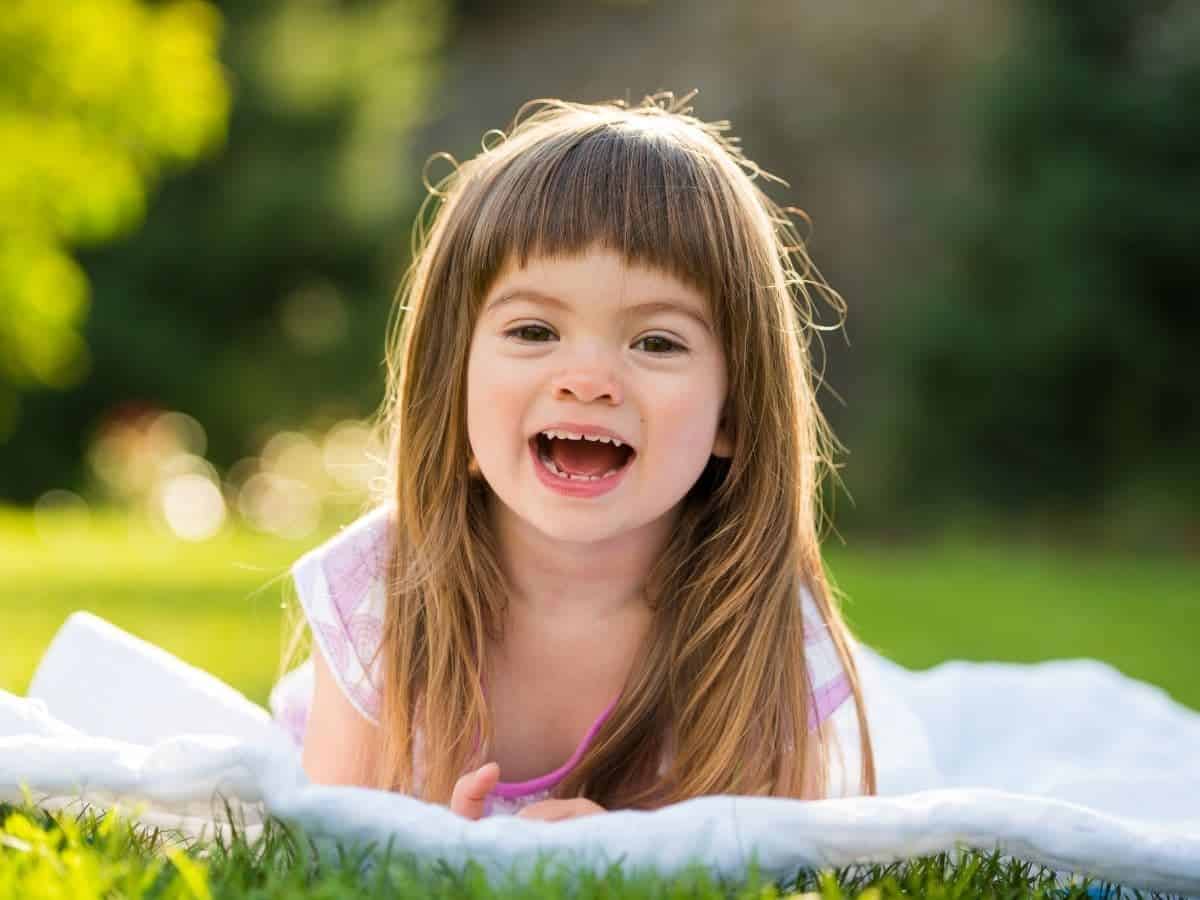
In children’s photography, the kid is the main focus.
When you’re framing the kid, check the background for distracting colors, objects, wildlife, nature, and people.
If it takes away the attention from the kid, it shouldn’t be in the frame.
So, eliminate distracting backgrounds by moving or using a shallow depth of field to blur it out.
Silliness is a good thing
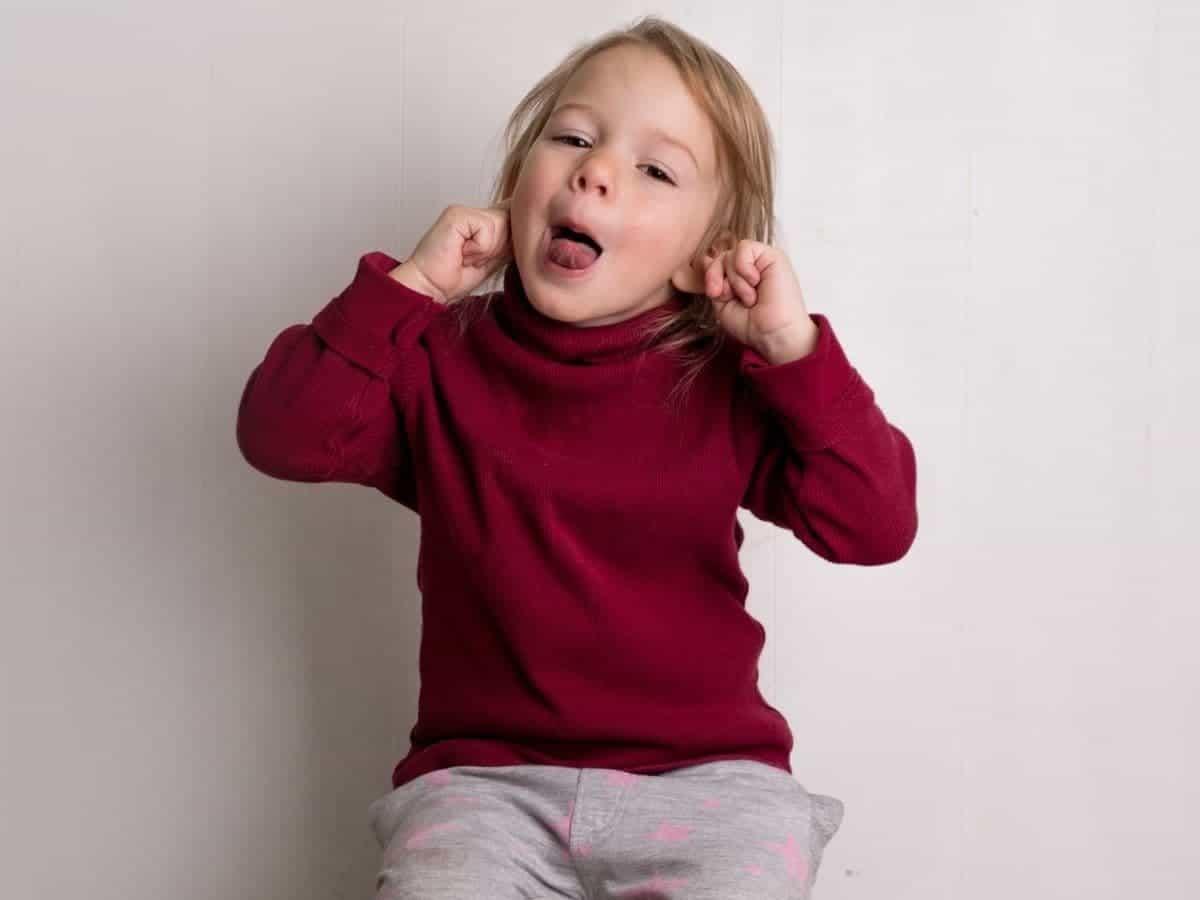
Kids love to be silly, and it’s a terrific thing. Welcome silliness because it’ll make the session fun, and you’ll snap memorable photos.
They’ll have a good time and be more willing to pause for a few posed shots.
Keep the session short
Limit your sessions with kids to an hour or less.
If your session goes longer, you’ll notice that kids will get tired or grumpy. That’s the last thing you’d want to portray in the photos.
So, keep your sessions short. If you notice signs of tiredness, begin wrapping up the photoshoot.
To capture high-quality images in an hour or less, you need to work quickly while enjoying the session and having fun.
How to photograph kids at home
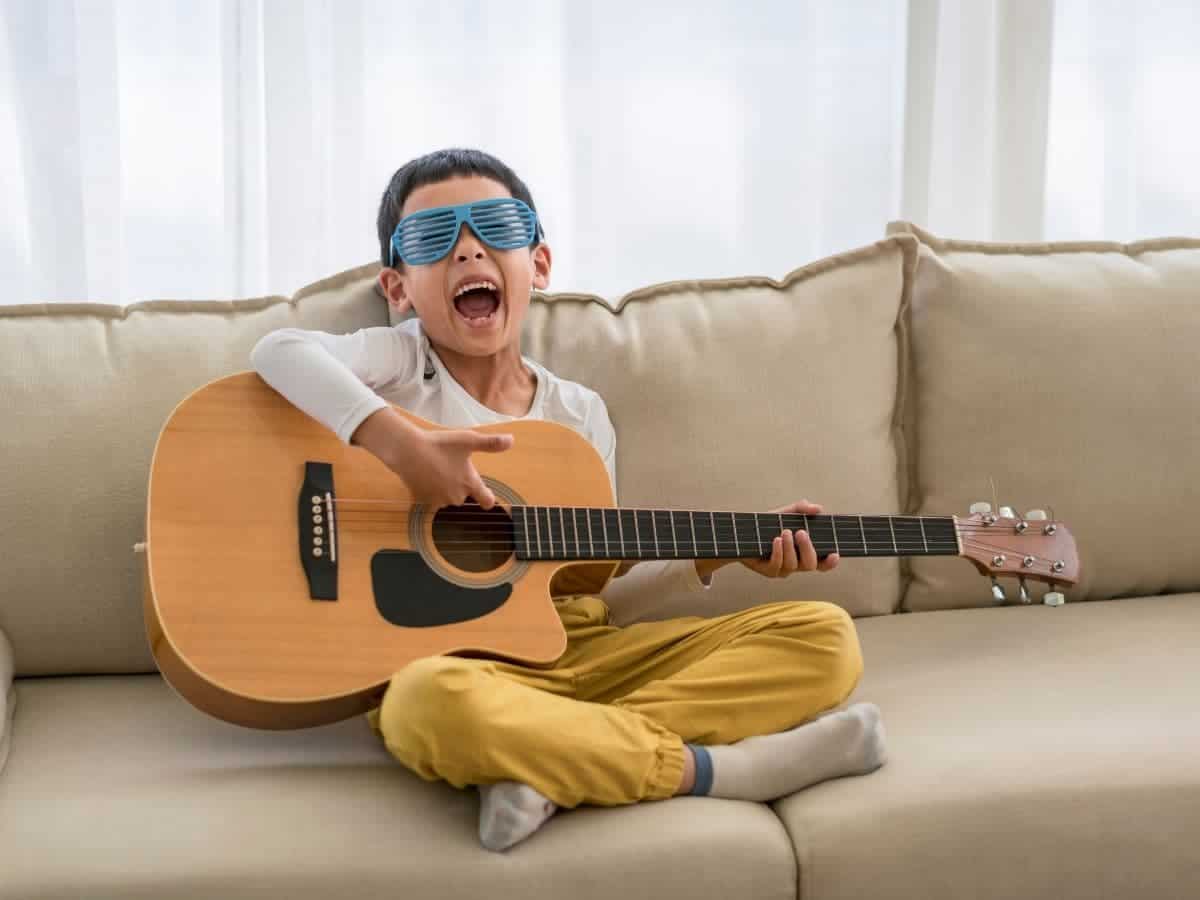
At home, kids are more comfortable. So, it’s an excellent setting for photoshoots.
When shooting photos of children at home, several factors will enhance your images.
First, use natural light from the window as the source of light. You can use front, back, or side lighting.
Front lighting provides a clean and evenly-lit portrait, while side lighting provides more dramatic shadows, and backlighting is great for silhouettes.
Another tip for shooting photos in a home is to clean things up. Rearrange the furniture and clean up the area to create a scene.
Indoor photos with window light produce beautiful results. However, you can also go outside.
Go for a walk or do an activity in the backyard, front yard, or around the neighborhood. It’ll present ideal opportunities for candid photos with natural lighting.
What to do if kids aren’t paying attention or being cooperative
Kids aren’t always going to cooperate. It’s challenging if you don’t know what to do.
So, remember the following when you’re photographing children, and they’re being uncooperative:
- Let them do something they want to do.
- Play a game.
- Offer a reward.
- Give them something to do.
- Let them expend their energy.
- Include parents, siblings, or friends.
- Let them be the photographer.
- Play music and have a dance party.
If you embrace imperfection, the session will go smoothly. To work with unwilling kids, go with the flow, be positive, and build rapport.
Conclusion
Kids are adorable, and photographing them is a lot of fun. However, it’s not without challenges.
By following the tips and techniques, you’ll take beautiful and magical photographs of children.
Whether the photos are of your kids or a client, they’ll be cherished for a lifetime.
Featured image courtesy of Canva.
